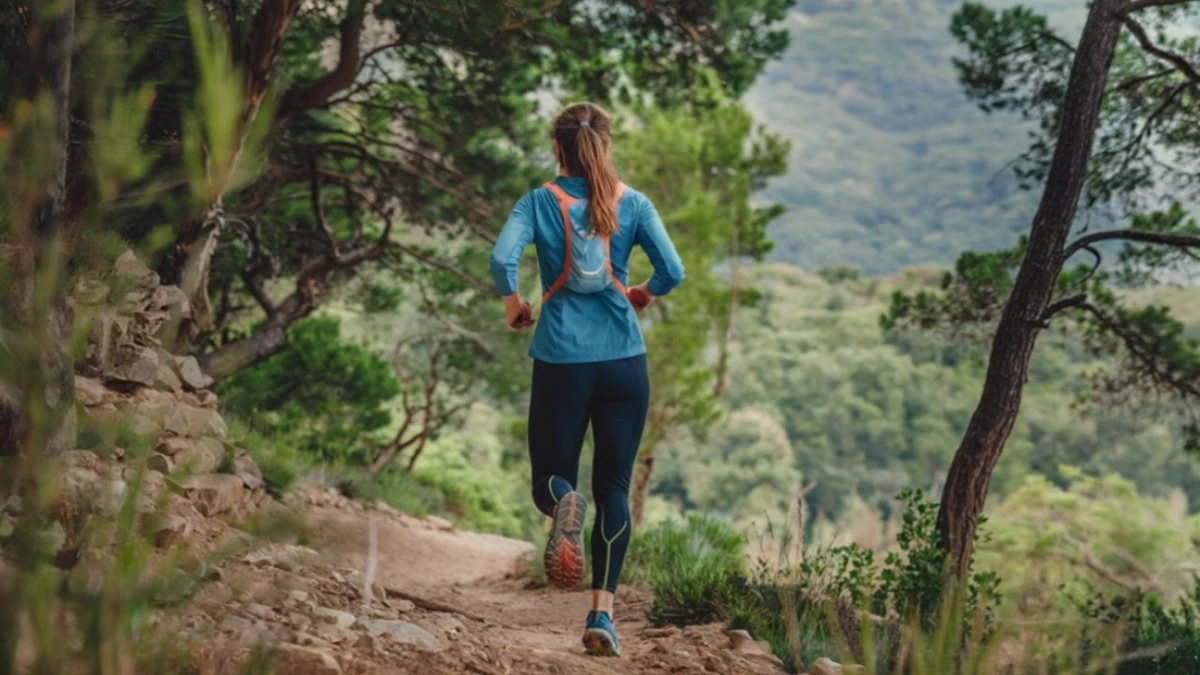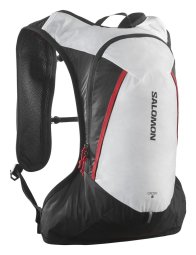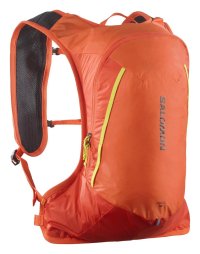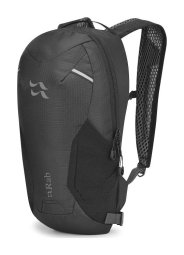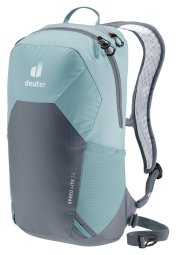Running is currently one of the most accessible and popular sports. It brings many benefits that can positively impact daily life. Running helps improve physical fitness, relieve stress, tone the body, and improve immunity and sleep quality. You don't need many things to do it. The most important aid for running, right after running shoes and clothing, is the running backpack, which allows you to have everything with you – from a water bottle or bladder to an energy gel, bar, or windbreaker. But how do you choose the right one? Our guide will help you select a running backpack that is not only comfortable but also practically designed and durable.
Contents
- Why Get a Running Backpack?
- Main Advantages of Running Backpacks
- When is a Running Backpack a Necessity?
- Parameters for Choosing a Running Backpack
- Hydration Bladder: Yes or No?
- How to Test a Running Backpack When Buying
- Maintenance of a Running Backpack
- Running Vest and Running Waist Pack
- FAQ – Frequently Asked Questions
- Conclusion
Why Get a Running Backpack?
The choice of a backpack can fundamentally affect your enjoyment of running and your performance. Do you engage in road running, train in a city park, or run mountain trails? A running backpack is an investment in your comfort, confidence, and safety that will surely pay off.
Running backpacks are designed with the specific needs of runners in mind – the emphasis is primarily on ergonomics, low weight, maximum adaptability during movement, the number of pockets not just for a bottle or hydration bladder but also for small items, and compression options. Modern running backpacks also pay attention to sustainability, meaning many are made from recycled materials, so you can get a top-quality product with professional features while also contributing to environmental protection.
Main Advantages of Running Backpacks
-
Accessible Hydration
Thanks to a hydration bladder or bottle pockets, you always have water at hand and can maintain your pace and optimise your performance even on long routes.
-
Storage for All Essentials
Energy gels, keys, a phone, or a waterproof jacket – everything fits comfortably inside, and you no longer have to hold anything in your hand. Having all important items with you means greater freedom and a better chance to adapt to conditions.
-
Better Organisation
Special compartments and elastic pockets ensure maximum clarity, so you can quickly access your gear without having to stop and search for something.
When is a Running Backpack a Necessity?
-
Trail Runs
Running in nature requires more gear. The equipment depends on the terrain, the variability of the weather, and the difficulty of the run. You need to adapt to the conditions and carry your own supplies, especially where there are no refreshment options. A running backpack will provide you with the necessary flexibility.
-
Long Distances
On runs over 10 km, you will appreciate being able to carry not only water but also carbohydrates to replenish your energy. Having everything you need at hand will allow you to be independent and run at a pace that suits you.
-
Ultramarathons and Races
During training and races, you can't do without basic equipment. The organisers of some races even require it at the start. With a backpack on your back, you will meet the requirements and decide for yourself when and how to use the items you have with you to prevent exhaustion and successfully complete the course.
Parameters for Choosing a Running Backpack
Size
Choose the size of the backpack according to the length of the routes you run most often. At the same time, consider your individual needs and equipment requirements.
- Backpacks up to 5 litres: Ideal for short runs. Lightweight and compact backpacks that do not restrict movement and allow you to carry basic equipment.
- Backpacks from 5 to 10 litres: Suitable for medium routes and trail running. They provide enough space for drink bottles or a hydration bladder, an energy gel or bar, clothing, and a mini first-aid kit for optimal comfort during the run.
- Backpacks over 10 litres: For ultramarathons or multi-day running tours. Backpacks designed for efficient organisation and carrying of supplies and equipment, ideal for runners who venture into challenging terrain away from civilisation.
Materials and Durability
An ultralight, flexible, and breathable outer material will adapt better to your movement than a robust, firm fabric, thus ensuring greater comfort. Running backpacks are most often made of polyester, nylon, and polyamide in combination with elastane, or other synthetic materials, and from recycled materials that have a guaranteed quality.
Waterproof or water-repellent materials or hydrophobic coatings on fabrics will protect the contents of the backpack in the rain, which will be especially appreciated by those who train year-round and in all weather. If you run in areas with variable conditions, an integrated rain cover, which is part of many backpacks, will be the best choice. If you are choosing a running backpack with impregnation, give preference to those without perfluorinated and polyfluorinated compounds (PFCs and PFASs), which are harmful to the environment.
Back System
A lightweight and ventilated back system with padding, breathable mesh, and channels for draining excess moisture adapts optimally to the shape of the back and minimises sweating.
Shoulder Straps
Wider shoulder straps with adjustable length fit better, distribute the weight of the load evenly on the back, and keep the backpack at the desired height. High-quality and breathable padding will increase comfort on longer routes. For better ventilation and lower weight, the shoulder straps may be perforated.
Chest and Hip Strap
Flexible and adjustable chest and hip straps with a quick-release buckle improve the stability of the backpack on the back without hindering movement. During running, they minimise the backpack's bouncing off the back. For even more effective fixation of the backpack on the body, some models are equipped with double chest straps. The hip and chest straps can be removable.
Compression Straps
A smart compression system will make life easier for runners. Side compression straps will prevent the stored items from moving and will allow you to regulate the volume of the backpack as needed. Thanks to this, you do not need to buy multiple backpacks for different types of running; one universal model is enough.
Pockets and Attachments
The more pockets, the better the organisation. If you don't want to be delayed by breaks, it's worth choosing a model that has many external pockets accessible with one hand without having to take the backpack off your back. Very practical, for example, are stretch pockets for bottles located on the shoulder straps or a pocket with an outlet for a water bladder. For road running, it is useful to have a loop for a flashing light on the backpack, and for trail running, a loop for folding trekking poles, which runners often use on the trail.
Reflective Elements
Reflective elements are useful for increasing personal safety when running at dusk or at night on the road or on poorly lit paths. Thanks to them, you will be more visible to other road users – drivers, cyclists, and other runners, who will notice you in time.
Hydration Bladder: Yes or No?
A hydration bladder (also a water reservoir) is a plastic water bag with a hose and a mouthpiece, which is inserted into the backpack after being filled. The hose is pulled out through an opening designed for it and led to the shoulder strap, where it is attached to be ready for immediate use. This hydration system, which replaces drinking from a bottle, is particularly popular in sports because it allows you to drink without interrupting the activity and taking off the backpack. Water bladders are made by a wide range of manufacturers and can have different volumes and shapes.
- Advantage: You don't need to stop to drink. The hose with a valve is always available, ensuring a regular intake of fluids and supporting the achievement of optimal performance.
- Disadvantage: The hydration bladder requires regular thorough maintenance and cleaning, otherwise bacteria and mould can form in it, which can cause an unpleasant smell and health problems.
Water Bladders by Volume
- 1–2 litres: For a short to medium-length run.
- 3 litres and more: For longer routes.
TIP: You can find more information about hydration bladders in our guide in the article how to choose a hydration bladder.
How to Test a Running Backpack When Buying
-
Fill the backpack with an appropriate load: When trying it on, put items in the backpack that you plan to take with you on a run – a hydration bladder or a drink bottle, a light jacket, a first-aid kit, a wallet, a mobile phone, energy bars. This will give you a better idea of its comfort under load.
-
Check the adjustability of the straps: Adjust the length of all straps (shoulder, chest, hip) and check if the backpack fits the body well. With optimal adjustment, the backpack should not move significantly on the back.
-
Simulate running in the store: If possible, try to run a few times with the backpack in the store. Watch to see if the backpack bounces while running and if it presses anywhere.
-
Compatibility with a hydration bladder: If you plan to use a water bladder, check if the backpack is equipped with a pocket for a hydration bladder of the appropriate volume.
Maintenance of a Running Backpack
- Regular cleaning according to the manufacturer's instructions.
- Air drying away from direct sunlight, so as not to compromise the life of the material or the colours.
- Storing in a dry place at room temperature, preferably in a well-ventilated area. Avoid long-term storage in a basement or garage, where the material could become damp and grow mould.
Running Vest and Running Waist Pack
A running vest and a running waist pack are great alternatives to a running backpack. They will be most appreciated by those who prefer a smaller storage space (2 to 5 litres) and only basic equipment.
An ergonomic running vest is suitable for road, trail, and endurance runners who want to have all their essentials stored directly on their body. A running vest, compared to a backpack, fits the torso better, is lightweight, and breathable. During long-distance runs on challenging terrain, it distributes the weight of the load evenly. To be beneficial, it must fit the body really well.
A sports waist pack for running is the optimal minimalist choice for short runs. It holds a water bottle, keys, and a phone, is lightweight, and padded in the back. Some models have an integrated pocket for a sports bottle, others are compatible with a water bladder. The waist pack does not hinder movement, but it can move more during running. The advantage of a running waist pack is its simplicity and low purchase price, while the disadvantage is a smaller capacity and less stability compared to a vest or a backpack.
FAQ – Frequently Asked Questions
1. What backpack volume is best for beginners?
For beginners, we recommend backpacks with a volume of up to 5 litres.
2. Is a running waist pack, a backpack, or a running vest better?
A waist pack is suitable for shorter routes (running for a maximum of 1 hour), a vest and a backpack for longer or more demanding runs (running for more than 3 hours). A vest will be appreciated by runners who prefer minimal equipment and maximum freedom of movement.
3. How do I properly adjust a running backpack?
Adjust the shoulder, chest, hip, and possibly also the compression straps so that the backpack fits snugly against the body, but at the same time, the setting is comfortable for you.
4. What type of backpack is suitable for running races?
Generally, lightweight and compact running vests or backpacks with a volume of 5–10 litres are suitable, which will not weigh you down but will allow you to carry everything you need. As for functional equipment, you must consider the type of running you do.
5. How much does a quality running backpack cost?
Prices range from £35 to £170 depending on the brand and size. More expensive models usually have better ergonomics and functional equipment.
6. Can I use a running backpack for other activities?
Yes, many models are versatile and can be used, for example, for hiking, cycling, easy trips, or everyday wear.
7. Is a running backpack with a hydration bladder or bottles better?
Both systems have their advantages. A hydration bladder allows you to drink without stopping, while bottles are easier to clean and can be quickly refilled in the field from natural sources (springs, etc.) or at restaurants.
8. Can I run with a running backpack in the mountains in winter?
Yes. With a rain-resistant backpack, you don't have to worry about snow either. When running with a bottle or a hydration bladder in a backpack in winter, it is advisable to store them in special thermal insulation covers so that the water in them does not freeze.
9. What are the differences between unisex and women's running backpacks?
Women's running backpacks are designed with the female body structure in mind – they have a shorter back panel and narrower shoulder straps, which, like the hip belt, are anatomically shaped to best fit female curves for comfortable wearing. Unisex models have a universal cut that can suit both men and women. It depends, for example, on body height, back size, shoulder width, etc.
10. Can I wash a running backpack in a washing machine?
Washing in a washing machine can damage the functional material, seams, and parts of the back panel reinforcements, so manufacturers of running backpacks do not recommend washing in a machine or drying in a dryer.
Conclusion
Whether you are a recreational runner who occasionally runs longer routes, an orienteer, or an ultramarathoner embarking on multi-hour runs, a well-chosen running backpack will provide you with the necessary support. Not only will it provide storage space and allow you to refuel at any time, but it will also bring a sense of comfort for your inner peace, which will support your performance and enthusiasm for running on any route. Thanks to great organisation and comfortable carrying, you will be able to focus undisturbed only on your goal while running.

